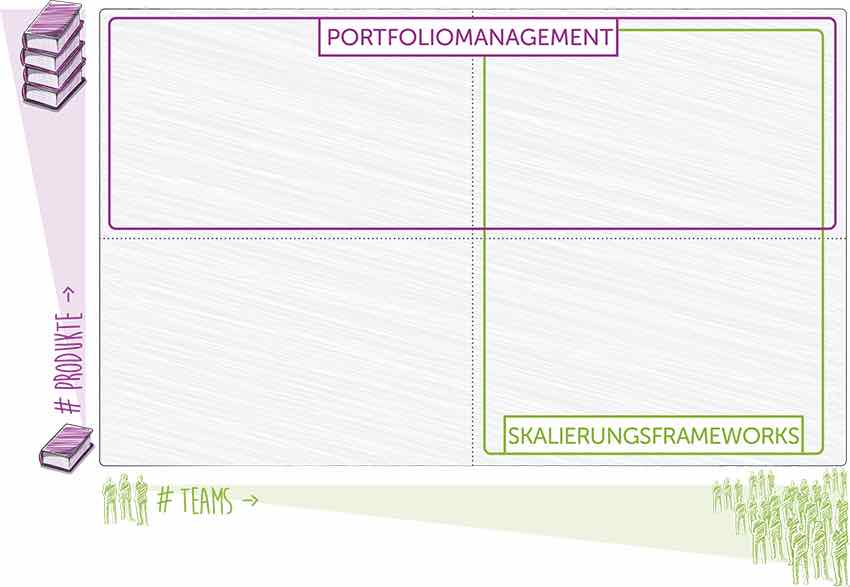"On the fringes of an introductory event, I got involved in a conversation with a training participant. After initially being skeptical, the participant understood why he and his team had to change the way they worked. He was curious to see how long it would take until this change was over."
Is it over? That's the crux of the matter: the transformation never ends. Agile transition does not mean selectively establishing agile working methods in a company or introducing a specific framework. Agility means a lasting change in the way a company thinks, in its philosophy and in its culture. It is not individual teams that should align themselves with agile values and principles, but the entire organization.
As long as the market is changing (i.e. always), companies at all levels - from strategy to implementation - must have the ability to quickly adapt products and processes to customer needs. If the goal is "the agile organization", both must change hand in hand: Operational action as well as strategic planning.
As in product development, the same premise applies to agile portfolio management: Agile portfolio management is not a project. It is an important prerequisite on the way to becoming an agile company.

Portfolio management is required wherever one or more teams are working on several products. Scaling frameworks, on the other hand, are used wherever several teams are working on one or more products.
The weaknesses of traditional portfolio management
Strategic initiatives and projects that are to be implemented over a longer period of time are collected and coordinated in a company's portfolio. The task of portfolio management is to control and coordinate the various (development) initiatives - some of which complement each other and some of which compete with each other - within a company and to allocate resources accordingly.
Portfolio management, which is often located close to the management, provides the rough framework and often also very abstract goals for the implementation of projects and plans at the operational level. What has not been taken into account in the strategy processes, which often take place in isolation from the actual "implementers", becomes a hurdle in day-to-day operations in the months that follow. It is not so easy to change this: the rigid, traditional process does not provide for a rolling adjustment to the current factual situation - planning takes place at least one year in advance, in line with the budget year.
This is in stark contrast to what the VUCA world demands: Decisions must be made quickly and in shorter cycles. Above all, these decisions must be made where the information is: With, by and with the people who ensure the operational implementation of the strategy. This is particularly relevant for digitalization initiatives, which in most cases involve a switch to agile working methods.

[VUCA] In addition to increasing market dynamics (volatility) and the resulting uncertainty, technological development is exponentially increasing the complexity and ambiguity of the products on offer. This diversity also affects customers' wishes and requirements.
Goals of agile portfolio management
Against this backdrop, the following challenges arise for modern, agile portfolio management:
- The portfolio process must establish a reciprocal link between corporate strategy and external changes.
- Planning must be carried out on a rolling basis at regular, shorter intervals.
- In order to set realistic targets in these shorter planning cycles, the operational level must be integrated into this planning.
- The company's strategic goals must be understood and supported at the operational level.
- The (rolling) objectives of the operational level must be aligned with the (rolling) objectives of the strategy.
Continue in the next post -> Company Kanban
Note: This text is an article by Sebastian Schneider and Lothar Fischmann that we published on our website in 2018. As this topic is still very popular, we republished this article on our blog when we restructured our website.

Write a comment